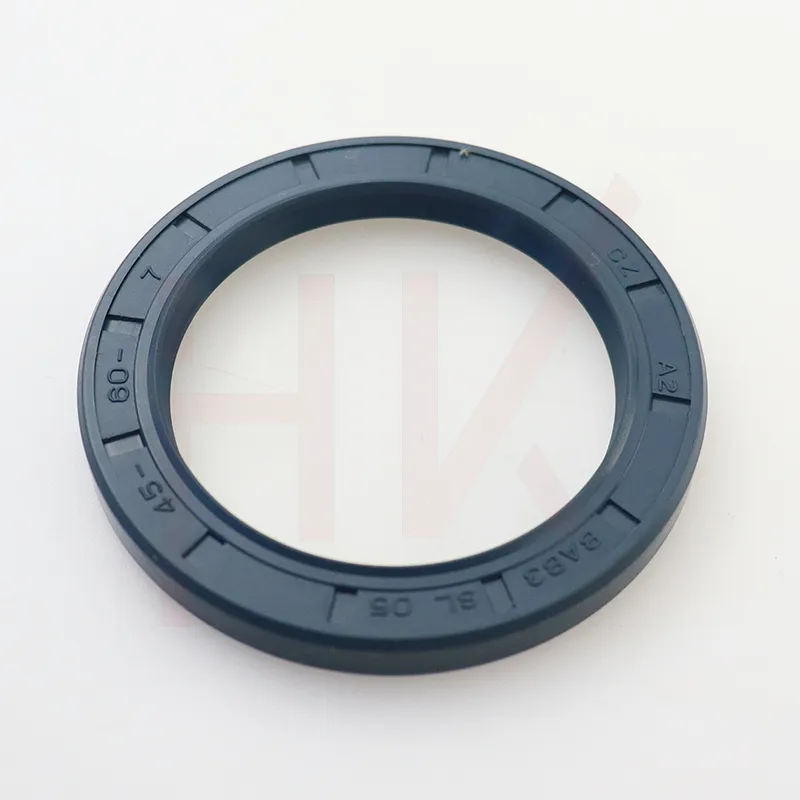Dec . 13, 2024 08:05 Back to list
dust wiper seal
Understanding Dust Wiper Seals Importance and Applications
Dust wiper seals play a crucial role in maintaining the integrity and performance of machinery, particularly in hydraulic and pneumatic systems. These seals are designed to prevent the ingress of dust, dirt, and other contaminants into the moving parts of equipment, ensuring smooth operation and longevity of the machinery. This article will explore the significance, types, materials, and applications of dust wiper seals, emphasizing their impact on industrial efficiency.
What are Dust Wiper Seals?
Dust wiper seals, commonly referred to as dust seals or scrapers, are typically installed on the exterior of hydraulic cylinders or other moving components. Their primary function is to wipe away contaminants from the rod as it exits or enters the housing. This proactive measure is essential for maintaining a clean working environment around critical components, reducing wear and tear, and preventing potential failures caused by contamination.
The Importance of Dust Wiper Seals
The importance of dust wiper seals cannot be overstated. In many industries, machinery operates in environments filled with debris, dust, and moisture. These elements can cause excessive wear, leading to reduced performance, increased maintenance costs, and unexpected downtime. Dust wiper seals act as the first line of defense. By keeping dirt and other particles at bay, they significantly extend the life of the seals, bearings, and other moving parts within the system.
Moreover, the proper functioning of hydraulic or pneumatic systems heavily relies on maintaining pressure and preventing leaks. The dust wiper seal, by keeping the contaminants out, helps maintain the functional integrity of the seals, thereby ensuring efficient operation and preventing costly fluid leaks.
Types of Dust Wiper Seals
Dust wiper seals come in various designs, each suited for different applications. The most common types include
dust wiper seal

1. Single-acting Wiper Seals These seals are designed to provide effective wiping action on one side of the rod, typically used in applications where significant exposure to contaminants occurs.
2. Double-acting Wiper Seals In contrast, these seals are engineered to provide wiping on both sides of the rod. They are commonly used in equipment that requires high reliability and is exposed to harsh conditions.
3. Integral Wipers These are incorporated into the main seal assembly, providing a more compact solution. They are often used in hydraulic cylinders where space constraints exist.
Materials Used in Dust Wiper Seals
The material selection for dust wiper seals is critical to their performance and durability. Common materials include polyurethane, nitrile rubber, and silicone. Polyurethane is favored for its excellent abrasion resistance and elasticity, making it ideal for dynamic applications. Nitrile rubber, on the other hand, is known for its resilience against oil and fuel, while silicone offers high-temperature resistance. The choice of material often depends on the specific operational environment, including the presence of chemicals, temperature extremes, and exposure to UV light.
Applications of Dust Wiper Seals
Dust wiper seals are utilized across a wide range of industries. In construction equipment, they protect hydraulic cylinders from dust and mud, ensuring reliable operation in tough terrains. In manufacturing, they safeguard moving components in various machinery from airborne particles. The automotive industry also relies on these seals to maintain the performance of suspension systems and hydraulic brakes, preventing contamination that could affect safety and performance.
Conclusion
In conclusion, dust wiper seals are an essential component in the design and operation of machinery across various sectors. Their ability to protect vital components from contamination not only enhances performance and extends equipment life but also reduces maintenance costs and increases operational efficiency. By investing in high-quality dust wiper seals, industries can ensure greater reliability and productivity in their operations, highlighting the importance of this often-overlooked yet crucial component in mechanical systems.
-
TCN Oil Seal Metal Ring Reinforcement for Heavy Machinery
NewsJul.25,2025
-
Rotary Lip Seal Spring-Loaded Design for High-Speed Applications
NewsJul.25,2025
-
Hydraulic Cylinder Seals Polyurethane Material for High-Impact Jobs
NewsJul.25,2025
-
High Pressure Oil Seal Polyurethane Coating Wear Resistance
NewsJul.25,2025
-
Dust Proof Seal Double Lip Design for Construction Equipment
NewsJul.25,2025
-
Hub Seal Polyurethane Wear Resistance in Agricultural Vehicles
NewsJul.25,2025
-
The Trans-formative Journey of Wheel Hub Oil Seals
NewsJun.06,2025
Products categories
















